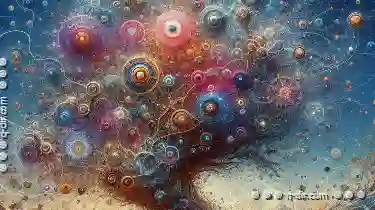However, the act of copying and pasting content across various platforms has become a significant concern for some who argue that it stifles true digital ...
 originality. This blog post will explore whether holding back on actions like paste truly affects creativity or if there is more to this issue than meets the eye. In today's digital age, creativity and originality are often praised and celebrated.
originality. This blog post will explore whether holding back on actions like paste truly affects creativity or if there is more to this issue than meets the eye. In today's digital age, creativity and originality are often praised and celebrated.1. Understanding Copying and Pasting
2. The Debate: Originality vs. Efficiency
3. The Role of Education and Tools
4. Conclusion
1.) Understanding Copying and Pasting
Before diving into whether pasting holds back originality, let's first define what copying and pasting mean in a digital context. In computing, these terms refer to transferring data from one location (source) to another (destination). For instance:
- Copy involves selecting content and storing it temporarily in memory or a hidden area of the computer’s storage so that it can be retrieved later.
- Paste, as you are aware, involves retrieving this stored information and inserting it into an open document or application.
In digital environments such as word processors, spreadsheets, or even on social media platforms like Instagram or TikTok, copying and pasting is a routine task used to reuse content efficiently.
2.) The Debate: Originality vs. Efficiency
On the Side of Holding Back Copying and Pasting
Some argue that relying too much on copy/paste actions can hinder originality because it becomes easier to use pre-existing material rather than creating something new from scratch. This complacency can lead to a decrease in innovative thinking since users might not exert effort to develop original ideas when they have ready access to vast amounts of content online.
Moreover, critics suggest that the ease with which one can paste text or images may contribute to plagiarism and intellectual property theft if not properly managed through proper attribution and copyright laws.
On the Side of Embracing Copying and Pasting
Others argue that copying and pasting is a fundamental part of learning and creativity. When students copy and study examples, they often find ways to adapt these examples into their own projects or ideas, which can be seen as an act of creation in its own right. Similarly, professionals might use snippets from other sources to spark new ideas or jump-start project development.
Furthermore, the efficiency gained by using copy/paste functions cannot be overlooked. This function saves time and effort significantly, especially when working on repetitive tasks where similar content needs to be applied across multiple locations. In this sense, copying and pasting can actually free up mental energy for more complex thinking and creativity rather than being bogged down by rote data entry or typing.
3.) The Role of Education and Tools
Educational institutions play a crucial role in teaching students not only the technical aspects of digital tools but also how to use them ethically and responsibly. Teachers should encourage their students to understand when it is appropriate to copy, cite sources correctly, and develop critical thinking skills around using others' ideas respectfully within the bounds of fair use.
Moreover, software developers have introduced features that aim to promote originality by suggesting similar content or prompting users to create something new after they’ve pasted initial elements. These tools can serve as a reminder for users to not only paste but also adapt and innovate.
4.) Conclusion
While it is true that excessive use of copying and pasting might limit creativity, the situation is nuanced. Copying and pasting should be seen more as a tool in the toolbox of creative processes rather than a barrier to originality. With proper guidance, education, and tools designed to encourage deeper engagement with content, we can harness the benefits of both efficiency and creation.
In summary, "Paste" does not necessarily hold back true digital originality; however, it is crucial to balance its use with efforts to foster creativity, critical thinking, and ethical usage practices in a digital world. By understanding when and how to utilize copy/paste functions alongside strategies that promote original thought, we can harness the full potential of digital tools for innovation and expression.

The Autor: / 0 2025-04-05
Read also!
Page-

Renaming Files via Command Line: The Power User’s Ultimate Guide
For power users who appreciate the speed and precision of command line operations, renaming files can be a breeze with just a few keystrokes. This ...read more

The Evolution of Chaos: How Tree View Perpetuates Disarray.
Among these, tree view structures are ubiquitous in software applications, providing a hierarchical representation of data. However, recent studies ...read more

Beyond the File System: Deleting Information Architectures.
We rely heavily on file systems and storage solutions to organize and retrieve data efficiently. However, beyond traditional file system-based ...read more